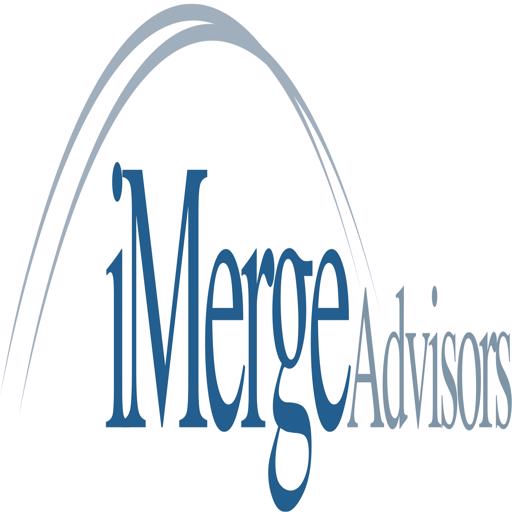Transportation management systems (TMS) are software solutions that help businesses plan, execute, and optimize the movement of goods and people from one place to another. They are used to manage transportation operations and logistics for a variety of industries, including manufacturing, retail, and distribution. In recent years, the adoption of TMS systems has increased significantly due to the many benefits they offer, including reduced transportation costs, improved efficiency, and enhanced visibility and control.
Transportation is a critical component of business logistics, especially in the e-commerce retail sector, where timely and efficient delivery is paramount. Effective transportation management ensures that products reach customers quickly, safely, and cost-effectively, which is essential for maintaining a competitive edge. Tactical Logistics provides a comprehensive approach to optimizing these operations, offering solutions that streamline transportation processes, reduce delays, and minimize costs.
By integrating advanced tracking systems, route optimization, and predictive analytics, they helps e-commerce businesses enhance delivery accuracy and customer satisfaction while maintaining a focus on sustainability and operational efficiency. This strategic management of transportation not only boosts performance but also strengthens a company’s overall logistics strategy.
A reliable logistics service is crucial for e-commerce businesses aiming to scale and maintain customer loyalty. By partnering with a trusted Canadian logistics company, retailers can access efficient shipping networks and cutting-edge technology that optimize delivery processes. This collaboration ensures that orders are fulfilled on time, whether it’s through regional or national distribution channels. With a focus on reducing operational costs and increasing delivery speed, these logistics services provide businesses with the tools needed to stay ahead of demand fluctuations.
In this article, we will provide an overview of TMS systems and their key features and functions. We will also discuss the benefits and challenges of implementing a TMS and provide some best practices for selecting and implementing a TMS solution.
What is a Transportation Management System?
A TMS is a software system that is designed to help businesses plan, execute, and optimize their transportation operations. It typically includes a range of features and functions that can be customized to meet the specific needs of the business. Some of the key features and functions of a TMS include:
- Planning and routing: TMS systems can help businesses plan and optimize routes for their transportation operations, taking into account factors such as distance, time, cost, and capacity. They can also help businesses identify the most suitable carriers for their shipments and negotiate rates with them. Leveraging the expertise of Perth courier companies can further enhance these benefits, ensuring efficient and reliable delivery services.
- Tracking and monitoring: TMS systems can provide real-time visibility into the location and status of shipments, allowing businesses to track their progress and monitor any potential delays or issues. This can be especially useful for businesses that need to meet strict delivery deadlines or have perishable goods that need to be delivered quickly.
- Freight management: TMS systems can help businesses manage the logistics of their freight operations, including the booking of carriers, the generation of shipping documents, and the tracking of freight costs, right here on MX Solutions. This can help businesses streamline their freight operations and reduce costs.
- Capacity planning: TMS systems can help businesses forecast their transportation needs and identify any potential capacity constraints, allowing them to plan ahead and make any necessary adjustments. This can help businesses ensure that they have the capacity they need to meet demand and avoid any bottlenecks or delays.
- Collaboration and communication: TMS systems can facilitate communication and collaboration between different parties involved in a transportation operation, such as carriers, shippers, and consignees. This can help businesses ensure that everyone is on the same page and that any potential issues are addressed in a timely manner.
Benefits of a Transportation Management System:
There are many benefits to implementing a TMS, including:
- Reduced transportation costs: One of the primary benefits of a TMS is the ability to reduce transportation costs. By using a TMS to plan and optimize routes, businesses can minimize the distance and time spent on transportation. Which can result in lower fuel costs and reduced labour expenses. Additionally, TMS systems can help businesses negotiate better rates with carriers, resulting in further cost savings.
- Improved efficiency: TMS systems can also help businesses improve the efficiency of their transportation operations. By automating many of the tasks involved in transportation planning and execution. TMS systems can help businesses reduce the time and effort required to manage their transportation operations. This can free up resources that can be used to focus on other areas of the business.
- Enhanced visibility and control: TMS systems provide real-time visibility into the location and status of shipments. Which can help businesses stay on top of any potential issues or delays. This can be especially useful for businesses that need to meet strict delivery. Deadlines or have perishable goods that need to be delivered quickly.
Challenges of Implementing a Transportation Management System:
While there are many benefits to implementing a TMS. There are also some challenges that businesses may face when implementing a TMS solution. Some of the common challenges include:
- Cost: One of the primary challenges of implementing a TMS is the cost. TMS systems can be expensive, especially for small businesses. In addition to the upfront cost of purchasing the software, businesses may also need to invest in additional hardware and infrastructure, as well as training for employees.
- Integration with existing systems: Another challenge of implementing a TMS is the need to integrate the system. With other systems and processes within the business. This can be especially challenging for businesses that have complex supply chains or work with a large number of partners.
- Change management: Implementing a TMS can involve significant changes to the way. That a business manages its transportation operations, and this can be challenging for employees. Who uses to working with traditional methods? Businesses may need to provide training and support to help employees adapt to the new system.
- Data accuracy and security: TMS systems rely on accurate and up-to-date data to function effectively. And this can be a challenge for businesses that have a large volume of data to manage. Additionally, businesses need to ensure that their TMS systems are secure and that sensitive data is protected.
Best Practices for Selecting and Implementing a Transportation Management System:
To ensure a successful TMS implementation, businesses should follow these best practices:
- Define your goals and requirements: Before selecting a TMS, it is important to define your goals and requirements. This will help you identify the features and functions that are most important to your business. And ensure that you choose a solution that meets your needs.
- Conduct a thorough evaluation: It is important to conduct a thorough evaluation of different TMS solutions to ensure that you choose the right one for your business. This should include a review of the vendor’s track record, a demo of the software, and references from other businesses that have used the solution.
- Consider the total cost of ownership: When evaluating TMS solutions. It is important to consider the total cost of ownership, including the upfront cost of the software, as well as any ongoing maintenance and support costs.
- Plan for training and support: Implementing a TMS can be a significant change for your business, and it is important to plan for training and support to ensure that employees are able to use the system effectively.
- Monitor and optimize: Once you have implemented a TMS. It is important to monitor and optimize the system to ensure that it is meeting your business. Needs and delivering the expected benefits. This may involve ongoing training and support for employees, as well as regular reviews of the system, to identify any areas for improvement.
Conclusion:
Transportation Management Systems (TMS) Transportation management systems. (TMS) are software solutions that help businesses plan, execute, and optimize their transportation operations. They offer many benefits, including reduced transportation costs, improved efficiency, and enhance visibility and control. However, there are also some challenges to implementing a TMS, including cost, integration with existing systems, and change management. By following best practices for selecting and implementing a TMS, businesses can ensure a successful. Implementation and realize the full benefits of the system.
If you are interested in selling your TMS business, please contact us. Our team at iMerge Advisors boasts years of experience and several completed transactions in the space. Providing exemplary service in an increasingly complex industry.



